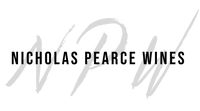170 products
- Red Wine
- Sangiovese
- Sustainable
- Dry
- Residual Sugar: 3.00 g/l
- Full Bodied
- 750ml
- 14.50% alc./vol
About the Winery
Cortonesi

“I’m a lucky man who has been given the opportunity to realize my dream and continue my family’s efforts making wine in the land where I was born.” – Tommaso Cortonesi
Tommaso is third-generation winemaker at Cortonesi that owns some of the most prized vineyards in the north and south-east of Montalcino. Favourable geography, rocky soils, and ingenious winemaking all come together to create some of the region's deepest and most elegant Brunello wines.
The Cortonesi family has been making wine since the 1970s. At first, wines were made to be enjoyed by family, friends and neighbours, but then in 1985, Cortonesi had gained enough traction within their community that they began to offer their wines commercially. Today, Cortonesi remains a family business that continues to work according to tradition, while employing modern technologies to the enhance the quality of their production.
Lovers of Sangiovese must experience “La Mannella”, a collection of wines exclusively sourced from Cortonesi's private vine land. This farm covers 56 hectares, eight of which are devoted to the production of some of the world's most coveted and age-worthy Brunello di Montalcino.
Press Reviews
Gardini Notes: Brunello di Montalcino 2020
95+ Points - Luca Gardini
From the historic estate, a Brunello with a classic plant and great olfactory impact: black mulberry on the nose, touches of clementine peel, then cinnamon, to the salty palate, with a finish on notes of small fruits and sweet spices. Persistent.
- Red Wine
- Cabernet Sauvignon
- Sustainable, Vegan-Friendly
- Dry
- Residual Sugar: 3.00 g/l
- Full Bodied
- 750ml
- 15.2% alc./vol
Press Reviews
Wine Orbit
94 Points - Sam Kim
A gorgeous rendition of the variety, showing blackcurrant, rich floral, warm spice, olive and cedar characters. The concentrated palate delivers excellent weight and refined texture, wonderfully structured by chalky tannins, offering wonderful frame and length. At its best: now to 2036.
- Red Wine
- Nebbiolo
- Sustainable
- Dry
- Residual Sugar: 2.00 g/l
- Full Bodied
- 750ml
- 14.00% alc./vol
Press Reviews
Vinous Media
96 Points - Antonio Galloni
The 2010 Barolo Riserva Bussia from Pianpolvere Soprano is a flat out stunner. It is also the first Barolo I've tasted under Rocche dei Manzoni's stuartship of this historic Monforte estate that takes me back to the wines of Ferruccio Fenocchio prior to his passing. Rose petal, mint, kirsh, spice and blood orange are some of the many notes that shape this exquisite, classically translucent Barolo. Medium in body and supremely refined, the 2010 is utterly beguiling. I can't wait to taste it with bottle age.
- Red Wine
- Tempranillo
- Sustainable
- Dry
- Residual Sugar: 2.00 g/l
- Full Bodied
- 750ml
- 14.50% alc./vol
Press Reviews
James Suckling
93 Points - Zekun Shuai, Senior Editor
Fine oak spices and cocoa powder to the ripe cherries, cassis, black cherries and warm stones. Full-bodied and polished on the palate with tightly wound tannins that seep through the compact fruit. Good balance between tight structure and fruit density. From organically grown grapes. Drinkable now, but better from 2024.
- Red Wine
- Sangiovese
- Organic, Sustainable
- Dry
- Residual Sugar: 2.00 g/l
- Full Bodied
- 750ml
- 14.00% alc./vol
Press Reviews
Gardini Notes: Brunello di Montalcino 2020
97+ Points - Luca Gardini
North-west of the name, solid design, with qualitative results of good constancy. Aroma that opens on notes of white currant, then bergamot and cinnamon, with touches of clementine zest. Salty to the palate, with return of citrus sensations and small fruits.





























